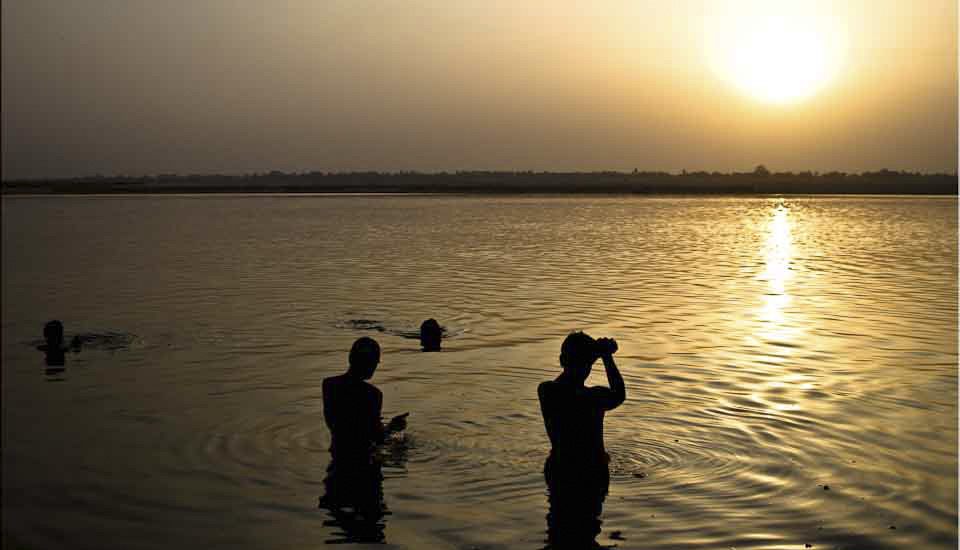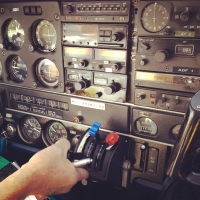.jpg)
Woman at a Temple
Even though many buildings in the ancient Newari city of Bhaktapur were damaged by the 2015 earthquake, there are people – and there is life – everywhere among the remaining temples and the ruins.
The earthquake in Nepal in April 2015 killed more than 8,800 people in that country, injured nearly three times that many, and left nearly 3.5 million homeless. As a further blow to the national psyche, numerous precious historical religious buildings were damaged or destroyed. Many of these were contributors to the 1979 UNESCO World-Heritage listing of the Kathmandu Valley as a site of significant cultural heritage.
Of course, there have been countless disasters – natural and otherwise – around the world since then.
But, disasters in very poor countries like Nepal often have flow-on effects, with the negative repercussions being felt for decades. When I visited in 2017 – two years after the earthquake – the impact was still obvious and palpable.
I was in Nepal as part of a photographic group with travel photographer Gavin Gough and photojournalist Jack Kurtz. I had already observed the after-effects of the quake in the Kathmandu Valley (e.g: Dirt Music; Light and Dark; A Thousand Steps; Dhulikel to Nagarkot; On the Track) and in Kathmandu itself (e.g: Faith, Faces, and Fakes; Light a Candle), and was spending the morning in Bhaktapur.
Bhaktapur, or Khwopa as it is known in the local Newari language, dates back to the early 8th century. It was the largest of the three Newari kingdoms in the Kathmandu Valley (the other two being Kathmandu and Patan) and was the capital of all of Nepal until the second half of the 15th century. It continued to be its own city-state until the 18th century, and has long been recognised as having a rich heritage of traditional art and architecture, which is demonstrated in what was the best-preserved palace courtyards and old city centre in Nepal.
The magnitude 7.8 earthquake inflicted considerable damage on Bhaktapur’s Durbar Square, a significant heritage site included in the UNESCO World Heritage list: “In Bhaktapur, several monuments, including the Fasi Deva temple, the Chardham temple and the 17th century Vatsala Durga Temple, were fully or partially destroyed.” In all, 116 heritage sites in the city were damaged: 67 of these “completely”, and repairs are slow and costly.
But, life goes on. The handicraft industries – woodcarving, metalwork, stonework, pottery, and weaving – are alive and well, and people go about their lives amid the ruins and repairs. The day I visited, it was Holi, and I have posted a few festival photos previously (see: Happy Holi!).
There is plenty to explore in this site of “Living Heritage”.
.jpg)
Nepali Gurkha Army Soldier at the Golden Gate
Only Hindus are allowed into the inner courtyards of the 55 Window Palace. Armed forced from the respected Gurkha regiments stand guard at the torana – the free-standing ornamental or arched gateway.
.jpg)
Entering Durbar Square
Archways, colonnades, loose bricks, ruins, shrines, Nepali pilgrims and foreign tourists: Bhaktapur’s Durbar Square is a sensory hodgepodge.

The Golden Gate – The Sun Dhoka
This gilded archway, with the 16-armed goddess Taleju Bhawani over the door, is considered one of the most important artworks in the Kathmandu Valley.

Theravāda Monks in Motion
Visitors to Bhaktapur come from all over; …

Theravāda Monks
… these monks have travelled from Thailand.

Buddhist Nun with a Begging Bowl

King Bhupatindra Malla Statue
A bronze statue (dated 1699) of King Bhupatindra Malla, king of Bhaktapur from 1696 to 1722, sits high on a pillar in Durbar Square.

King Bhupatindra Malla and the Taleju Bell
With his hands in prayer, the king overlooks the Golden Gate and the 55 Window Palace. The rubble remains of the Vatsala Durga Temple – destroyed in the 2015 earthquake, sit behind him.

Restored Chyasilin Mandapa
Nepal is no stranger to earthquakes: this was one of the many buildings destroyed by the 1934 quake. It has been rebuilt over a metal core, incorporating original components.

Models in the Ruins of Bhaktapur
While I was wandering, models in traditional dress were taking part in a photoshoot.

Models on the Steps of Chyasilin Mandapa
With the permission of their Art Director, I made a few shots myself.

Looking through Chyasilin Mandapa
With the models elsewhere, the stray dogs go back to sleep.

Ruins: Fasidega Temple
Two years after the earthquake, recovery work continues. This is one instance where the ruins might be a good thing: the Fasidega Temple, dedicated to Shiva, was a not-particularly attractive white lump!

Elephants: Fasidega Temple
Animals: elephants, lions and cows – still stand guard on the remaining six-level plinth.

Woman at the Well
Among the ruins and rebuilding, everyday life goes on.

Hindu Shrine
Hindu shrines – large and small – are plentiful in Durbar Square and the rest of Bhaktapur.

Life among the Ruins

Pashupatinath Temple
Bhaktapur is known for its arts and crafts; shops around the squares and down the alleyways are full of beautiful objects. Artworks also spill into the public spaces.

Girl on a Roof

Man on the Steps

Hindu Icons
Religious iconography and paraphernalia is for sale at regular intervals.

Dattatreya Temple
Originally built in 1427 by King Yaksha Malla – supposedly from the timber of a single tree – this temple is dedicated to Dattatreya, who is a mix of Brahma, Vishnu and Shiva.

Malla Wrestler
In front of the Dattatreya Temple, there are two stone statues of popular wrestlers: Jaya Malla and Patta Malla.

“Ring the Bell”
Hindu shrines always include bells: the sound of the bell announces your presence to the deities and is believed to clear your mind of thoughts.

Bhaktapur Street
The narrow bricked streets are full of life and lined with interesting shops.

Polishing Brass
Craftsmen keep busy between customers.

Marionette (iPhone6)

Men in their Dhaka Topi Hats
People find spots to sit and chat and watch the world go by.

Bell, Shrine and Loose Bricks in a Courtyard

Buddha in an Alcove

Deity in a Niche

Child in a Window

Bhaktapur Street Scene

Singing for Shiva
Somehow, it seems appropriate that my last impression of this venerable “living museum”, was of a musical group sitting in an alcove, singing time-honoured songs for Shiva the Destroyer.
Non-Nepali visitors to this ancient Newari city pay an entry-fee; this money helps fund the maintenance and repair of the temples.
 I hope it also goes some way towards the continued rebuilding of difficult lives.
I hope it also goes some way towards the continued rebuilding of difficult lives.
Namate!
Photos: 12March2017




































.png)

